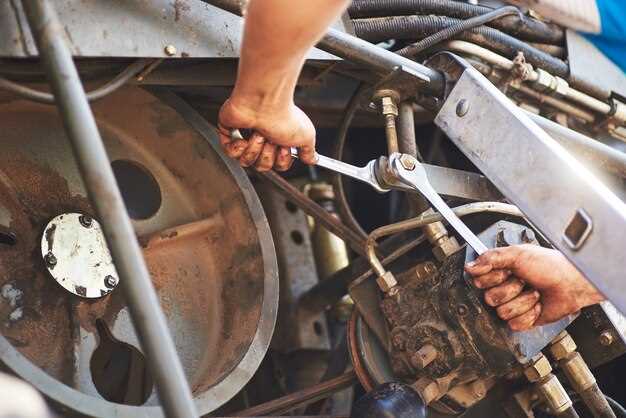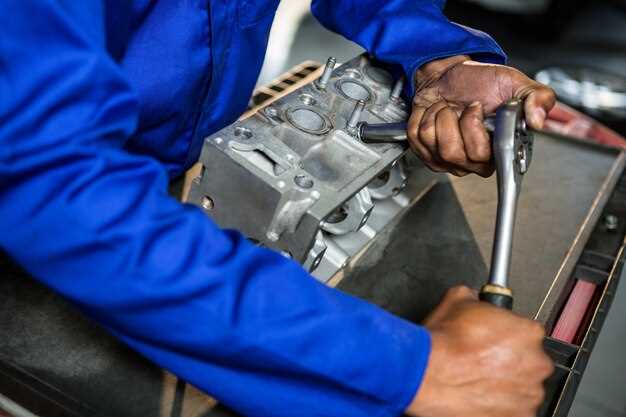The Importance of Upgrading to Stainless Steel Brake Lines


When it comes to vehicle safety and performance, the importance of a reliable braking system cannot be overstated. Upgrading to stainless steel brake lines is a crucial step in enhancing your car’s braking capabilities. While standard rubber brake lines may get the job done, they are often prone to expansion, weakening, and deterioration over time, which can lead to diminished braking response and potential safety hazards.
Stainless steel brake lines offer several advantages that go beyond just appearance. Their durability ensures they resist wear and tear far better than their rubber counterparts. This resilience not only leads to longer lifespan but also maintains consistent brake performance even under extreme conditions such as high temperatures or heavy usage. Moreover, stainless steel lines are less susceptible to moisture infiltration, minimizing the risk of corrosion and ensuring that your brake fluid remains uncontaminated.
Furthermore, the enhanced brake response provided by stainless steel lines is significant. Unlike rubber lines that can expand under pressure, stainless steel lines provide a firmer, more direct connection between your foot and the brake pedal. This means that when you press the brake, you feel a more immediate and responsive braking action, which can be critical during emergency situations. By upgrading to stainless steel brake lines, you invest in both safety and performance, making your vehicle a more reliable choice on the road.
Understanding the Benefits of Stainless Steel Brake Lines
Upgrading to stainless steel brake lines offers several significant advantages that enhance both performance and safety. One of the primary benefits is improved durability. Unlike traditional rubber brake lines, stainless steel lines resist wear and tear, corrosion, and expansion under pressure, resulting in a longer lifespan even under harsh conditions.
Another critical advantage is enhanced braking performance. Stainless steel lines provide a more consistent and firmer brake pedal feel due to their resistance to swelling. This translates to more precise braking responses, which is essential for both casual drivers and those engaging in high-performance or racing activities.
Increased safety is another aspect to consider. Stainless steel brake lines are less prone to failure under extreme temperatures and pressures, significantly reducing the risk of brake line rupture. This reliability can mean the difference between a safe stop and a potential accident.
Additionally, stainless steel brake lines require minimal maintenance. Once installed, they typically need less frequent replacement compared to their rubber counterparts, saving both time and money in the long run. Moreover, their resistance to various environmental factors makes them less susceptible to damage from road debris and fluids.
Finally, switching to stainless steel brake lines can also enhance the aesthetic appeal of your vehicle. Many drivers appreciate the sleek, polished look of stainless steel, which can complement the overall appearance of a modified car.
In conclusion, upgrading to stainless steel brake lines is a wise investment for those seeking improved performance, enhanced safety, reduced maintenance needs, and aesthetic appeal in their vehicle’s braking system.
Comparing Stainless Steel to OEM Brake Lines
When it comes to braking performance, the choice of brake lines plays a critical role. OEM (Original Equipment Manufacturer) brake lines are typically made from rubber or a rubber composite, designed to meet factory standards for performance and durability. However, stainless steel brake lines offer distinct advantages that can enhance both safety and driving experience.
One of the primary differences is the material composition. Stainless steel lines are constructed from a durable alloy that resists corrosion and wear, making them far more resilient than rubber lines. This robustness ensures longer lifespan and reliability under extreme conditions, which can be particularly beneficial in regions with harsh weather or where road salt is commonly used.
Another significant advantage of stainless steel brake lines is their resistance to expansion. OEM rubber lines can swell under high-pressure conditions, leading to a spongy brake pedal feel and unpredictable braking response. Stainless steel lines, on the other hand, maintain a consistent shape, yielding a firmer pedal feel and improved brake response, which is crucial for performance driving or emergency situations.
Installation ease also sets stainless steel brake lines apart. Many aftermarket stainless steel options are designed for direct replacement, often featuring pre-fitted brackets and connectors, making the upgrade straightforward for many car enthusiasts. This contrasts with OEM lines, which can sometimes require more effort to install due to their specific fitting requirements and potential for wear-related issues.
Furthermore, aesthetic appeal should not be overlooked. Stainless steel lines often come with a sleek, polished look that enhances the overall appearance of the vehicle’s braking system. This visual impact can be especially appealing for those who place value on both performance and style.
In summary, while OEM brake lines are adequate for standard driving conditions, stainless steel brake lines provide superior durability, performance, and reliability, making them an appealing choice for those serious about vehicle safety and performance enhancement.
Recognizing Signs That It’s Time to Upgrade
Upgrading to stainless steel brake lines can significantly enhance your vehicle’s braking performance. However, it’s crucial to recognize when it’s time to make this upgrade. Below are key signs indicating that your current brake lines may need replacing:
| Sign | Description |
|---|---|
| Corrosion or Rust | Examine your brake lines for any signs of corrosion or rust. If you notice discoloration or flaking, it’s time to consider upgrading. |
| Soft or Spongy Brake Pedal | If your brake pedal feels soft or spongy, it may indicate old or damaged brake lines incapable of maintaining hydraulic pressure effectively. |
| Fluid Leaks | Visible brake fluid leaks around the brake lines are a clear indicator that they are compromised. Immediate replacement is necessary to ensure safety. |
| Inconsistent Braking Performance | If the brakes feel inconsistent, with varying pressure or responsiveness, this may signal the need for new lines to restore optimal function. |
| Age of Brake Lines | Brake lines typically last around five to ten years. If your vehicle’s brake lines are approaching or exceeding this age, consider upgrading to prevent potential failures. |
| Frequent Brake Maintenance | Regularly needing to bleed or maintain your brakes can indicate underlying issues with the brake lines, suggesting it’s time for an upgrade. |
Being proactive in recognizing these signs can prevent dangerous situations on the road. Upgrading to stainless steel brake lines not only enhances your vehicle’s performance but also ensures a safer driving experience.
Installation Tips for Stainless Steel Brake Lines
When installing stainless steel brake lines, it is crucial to ensure a proper fit and secure connections. Start by gathering all necessary tools, including a brake line wrench, flare nut wrench, and a cutting tool for any adjustments. Ensure you have brake line clips and mounting hardware on hand, as these are often needed for installation.
Before removing the old brake lines, thoroughly inspect the entire brake system. This will help identify any additional components that may need maintenance or replacement. Once you are ready to proceed, carefully bleed the brake system to remove any residual brake fluid, preventing spills and contamination.
When installing the new stainless steel lines, route them carefully to avoid interference with moving parts and sharp edges. Ensure that the lines are secured with brackets and clips to minimize vibration and friction. Always follow the manufacturer’s specifications for bending and routing the lines, as sharp bends can restrict fluid flow and cause premature failure.
Use Teflon tape or thread sealant on the fitting threads to prevent leaks, but avoid excessive application that could interfere with line integrity. During the connection phase, take care not to overtighten fittings, as this can cause damage to the line or fitting, leading to leaks.
After all connections are made, refill and bleed the brake system to eliminate air bubbles. This step is critical for ensuring reliable performance. Finally, conduct a thorough inspection for any leaks or issues, and take the vehicle for a test drive to confirm smooth operation before returning to regular use.
Maintenance Practices for Longevity of Brake Lines

To ensure the durability and effectiveness of stainless steel brake lines, regular maintenance practices are essential. Proper care can prevent deterioration, improve performance, and enhance safety. Below are key practices to maintain the longevity of brake lines:
-
Regular Inspections:
Conduct thorough inspections of brake lines at least once a year or during routine vehicle maintenance. Look for signs of wear, corrosion, or damage.
-
Check for Leaks:
Monitor for fluid leaks around the brake line connections and fittings. Any signs of leakage should be addressed immediately to prevent brake failure.
-
Clean Brake Lines:
Periodically clean the brake lines using a mild detergent and water solution to remove dirt and grime. Avoid harsh chemicals that could cause corrosion.
-
Protective Coating:
Apply a protective coating or sealant specifically designed for metal surfaces to prevent corrosion. This is particularly important in areas with harsh weather conditions.
-
Proper Installation:
Ensure brake lines are installed correctly, following manufacturer recommendations. Improper installation can lead to excess strain and potential failure.
-
Avoid Excessive Heat:
Keep brake lines away from excessive heat sources, such as exhaust systems, which can weaken materials over time. Insulate or reroute lines as necessary.
-
Use Quality Parts:
When replacing or upgrading brake lines, choose high-quality stainless steel components that are resistant to corrosion and wear. Invest in reputable brands for reliability.
-
Monitor Brake Fluid Condition:
Regularly check the brake fluid level and condition. Contaminated or deteriorating brake fluid can harm brake lines and components.
By following these maintenance practices, vehicle owners can significantly extend the lifespan of their stainless steel brake lines, ensuring better performance and enhanced safety on the road.
Cost Analysis: Is the Upgrade Worth It?
Upgrading to stainless steel brake lines can be a significant investment for any vehicle owner. To determine whether this upgrade is worth the cost, several factors must be considered:
- Initial Investment:
The price of stainless steel brake lines typically ranges from $100 to $300, depending on the vehicle model and brand. This initial cost may be higher than standard rubber or polymer brake lines.
- Performance Benefits:
Stainless steel brake lines provide improved performance through:
- Increased durability and resistance to abrasion
- Reduced expansion under pressure, which enhances brake feel
- Better heat dissipation, leading to more consistent performance
- Longevity:
Unlike traditional rubber lines, stainless steel options typically last much longer, reducing the need for frequent replacements. This longevity can lead to savings over time.
- Safety Considerations:
Upgrading to stainless steel lines can enhance overall safety by providing more reliable braking performance. The value of improved safety cannot be overstated, especially for performance or heavy-use vehicles.
- Potential Resale Value:
Investing in high-quality components like stainless steel brake lines can improve a vehicle’s resale value. Many buyers look for vehicles with upgraded performance parts.
In summary, while the upfront cost of upgrading to stainless steel brake lines may be higher than traditional options, the long-term benefits–such as improved performance, durability, safety, and potential resale value–make this upgrade a worthwhile consideration for many vehicle owners.
